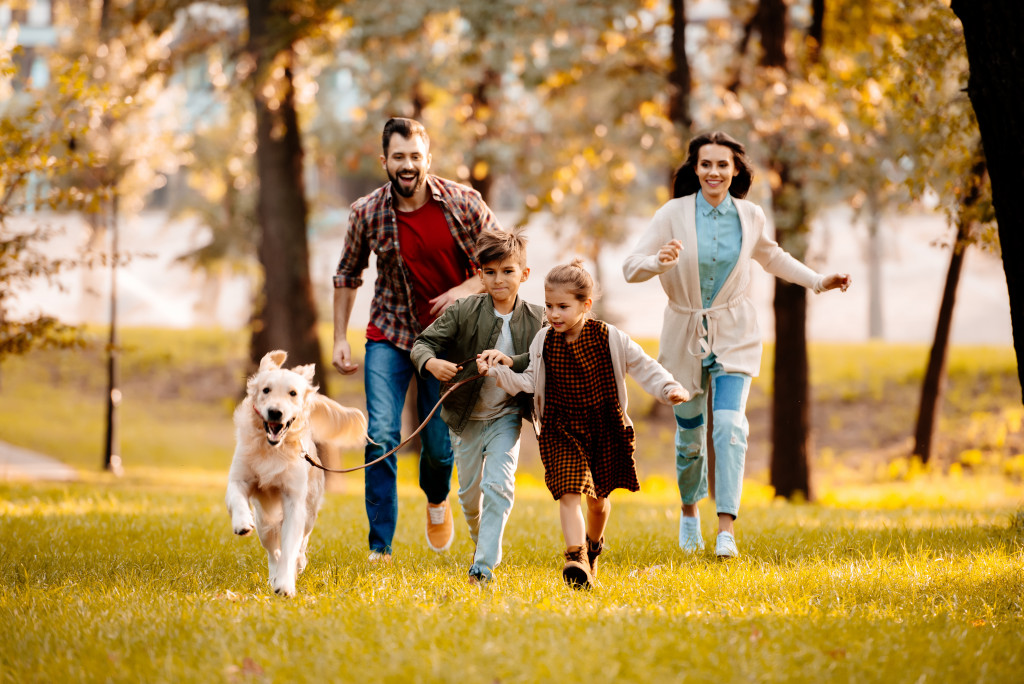Getting a family pet offers many benefits, especially for children. Some of them include having a best friend to play with, developing empathy and compassion, and learning how to be responsible.
If you’re thinking about adding a new dog to your family, there are some things you need to do before bringing them home. In addition to preparing your home for the new arrival, you also need to make sure your family is ready for the responsibility of owning a pet.
Here are some tips on how to get everything ready before the big day:
1. Choose the right dog for your family.
Consider factors like energy level, size, and temperament when deciding. You’ll also want to make sure the breed is compatible with your lifestyle and living situation. Many dogs require a lot of exercise, so if you live in an apartment or don’t have a backyard, you’ll need to choose a smaller breed or one with lesser exercise requirements.
It would be best if you also researched the health concerns associated with different breeds. Some breeds are more prone to certain illnesses or conditions than others, so it’s essential to be aware of these potential problems.
2. Puppy-proof your home.
Make sure your home is safe for a dog by removing any poisonous plants, securing loose wires, and putting away anything small or sharp that they could swallow. You’ll also want to create a designated area for your pup, complete with a bed, food and water bowls, and toys.
If you have a yard, consider getting professional lawn care to remove any toxins or hazards that could be harmful to your new pet. They can also help detect the presence of pests that could pose a threat to your pup’s health.
Stairs can be dangerous for puppies, so you may want to block off any areas where they could fall. Check doors, windows, and gates to ensure they’re secure and can’t be opened by a curious pup.
3. Get the supplies you need.
Before bringing your new dog home, ensure you have all the supplies you’ll need, including food, treats, a collar and leash, a crate or dog bed, and toys. You may also want to consider investing in pet insurance. This can help cover the cost of unexpected vet bills, especially if your dog is prone to health problems.
When it comes to food, you’ll want to choose a high-quality brand appropriate for your dog’s age, breed, and activity level. Ask your vet for recommendations on the best food for your pup.
Choosing the space where you’ll keep your dog’s food and water bowls is also essential. Keep them in a spot that’s easy for your dog to reach but out of the way of foot traffic. This will help prevent your dog from getting tripped over or stepped on.

4. Prepare your family.
Talk to your kids about what it means to have a dog in the family. Explain the importance of being gentle and respectful, and set some ground rules for things like where the dog can go in the house and how often they need to be exercised.
It’s also essential to discuss who will be responsible for feeding, walking, and exercising the dog. This will help ensure that everyone is on the same page and that your new pet gets the care they need. Always supervise young children around dogs, and teach them how to approach and pet them properly.
5. Set up a vet appointment.
Never bring a new dog home without first taking them to the vet. This is important for two reasons: first, you’ll need to ensure the dog is healthy and up-to-date on vaccinations, and second, the vet can give you advice on how to best care for your new pet.
Be sure to ask the vet about what kind of food you should feed your dog, how often they need to be exercised, and any other questions about caring for your new pet. You also might want to consider microchipping your dog if they ever get lost.
6. Train your dog.
It’s important to start training your new dog as soon as possible. This will help them understand what is expected and make the transition into your family easier. You can use several different training methods, but it’s essential to find one that works for you and your dog.
You’ll want to teach your dog some basic commands, including sit, stay, come, down, and off. You can find more detailed instructions on doing this in dog-training books or online.
It’s also important to socialize your dog, exposing them to different people, places, and situations. This will help your dog become comfortable in various settings and prevent behavior problems down the road.
Bringing a new dog into your family is a big decision that requires preparation. By following the tips in this article, you can make sure you’re ready for the challenge and that your new pup has everything they need to be happy and healthy. Be patient, consistent, and loving, and you’ll soon have a loyal friend for life.




